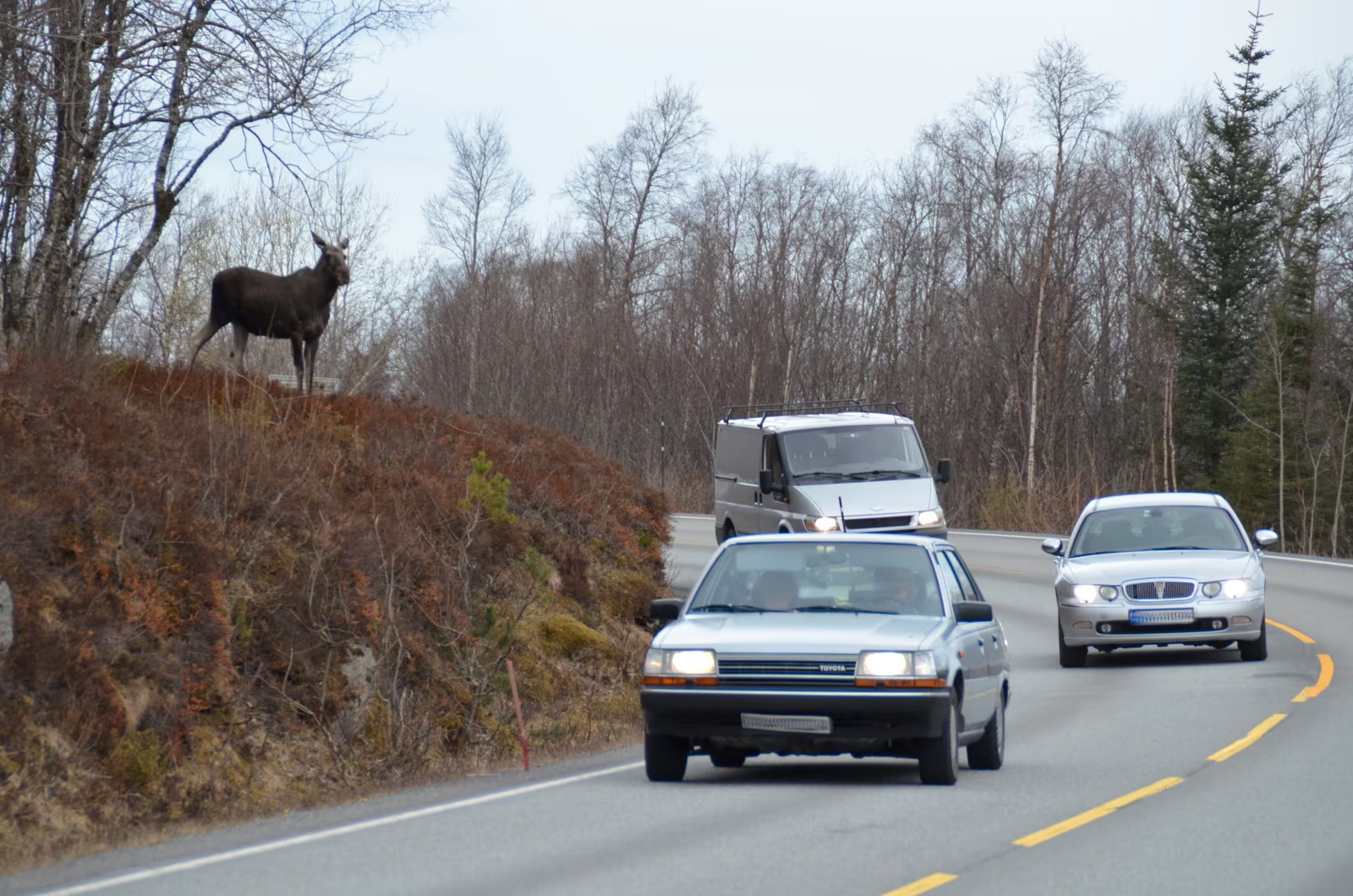Understanding the intricacies of local governance can often feel daunting, especially when it comes to environmental management. One such vital entity that plays a significant role in this realm is Viltnemnda. This governing body operates at the intersection of wildlife conservation and community interests, ensuring sustainable practices within our ecosystems. But what exactly does Viltnemnda do? How does it affect your local environment? In this blog post, we’ll delve into the fascinating world of Viltnemnda exploring its roles, responsibilities, and the impact it has on maintaining ecological balance in our communities. Whether you are a nature enthusiast or simply curious about local governance, there’s much to uncover!
What Is Viltnemnda? Definition, Legal Basis & Purpose
Viltnemnda is a local wildlife management board in Norway, established to oversee the conservation and sustainable use of animal populations. Its primary aim is to balance human interests with ecological needs through regulated hunting and wildlife protection measures.
Legally rooted in the Wildlife Act, Viltnemnda operates under specific mandates that guide its decisions. This includes assessing local wildlife conditions, providing recommendations for hunting quotas, and ensuring compliance with environmental laws. By promoting biodiversity while considering community concerns, Viltnemnda plays a crucial role in fostering harmony between humans and nature.
Structure & Membership: How Viltnemnda Operates
Viltnemnda operates as a local wildlife management committee, typically composed of elected representatives from the municipality. Its structure usually includes members with expertise in ecology, law enforcement, and community interests. This diverse membership ensures that various perspectives are considered when making decisions regarding wildlife management.
The committee meets regularly to discuss pressing issues such as hunting regulations and conservation efforts. These meetings provide an essential platform for collaboration among stakeholders, including environmental organizations and local citizens. By fostering open communication, Viltnemnda can effectively address the complexities surrounding local ecosystems while maintaining transparency within its operations.
Key Tasks & Responsibilities of Viltnemnda
Viltnemnda plays a vital role in wildlife management, focusing on sustainable practices that protect local ecosystems. One of its primary tasks is to assess and manage wildlife populations, ensuring they remain balanced and healthy. This includes monitoring species numbers and habitats to prevent overpopulation or extinction.
Additionally, Viltnemnda is responsible for developing hunting regulations and licenses. It creates guidelines for hunters while promoting ethical practices that align with environmental conservation. Through public outreach programs, the organization educates communities about wildlife protection measures and encourages responsible behavior towards nature.
Challenges & Criticism Faced by Viltnemnda
Viltnemnda faces numerous challenges, particularly regarding balancing ecological preservation with human interests. Conflicts often arise between hunting regulations and conservation efforts, leading to criticisms from both hunters and environmentalists. Stakeholders may feel that their views are not adequately represented in decision-making processes.
Moreover, the lack of clear communication can breed mistrust within communities. Some citizens perceive Viltnemnda as an authority disconnected from local needs or concerns. This disconnect can hinder effective collaboration and limit the organization’s ability to achieve its goals for sustainable wildlife management in local ecosystems.
How Citizens Can Interact with Viltnemnda
Citizens can interact with viltnemnda through various channels. Engaging in public meetings and workshops allows community members to voice concerns and share insights about local wildlife management. These sessions foster transparency and encourage collaboration between citizens and the committee.
Additionally, residents are encouraged to report any wildlife-related issues directly to viltnemnda. This could include sightings of endangered species or incidents involving game animals. Such communication helps the committee make informed decisions that reflect the needs and interests of the local ecosystem while promoting responsible wildlife stewardship among community members.
Membership & Appointment
Membership in viltnemnda is typically comprised of local stakeholders, including representatives from municipalities, wildlife organizations, and landowners. This diverse composition ensures that various interests are represented within the council.
Appointments are usually made by municipal authorities or other governing bodies responsible for wildlife management. Candidates must demonstrate knowledge of ecological issues and a commitment to sustainable practices, ensuring effective governance in balancing human activities with conservation efforts.
Reporting & Accountability
Viltnemnda is committed to transparency and accountability in its operations. Regular reporting on wildlife management activities is essential. These reports help stakeholders understand how decisions are made and the status of local ecosystems.
The public can access these documents, promoting trust within the community. This openness fosters collaboration among residents, environmental groups, and governmental bodies, ensuring that everyone has a voice in safeguarding natural resources while holding Viltnemnda accountable for its actions.
Collaboration
Collaboration is essential for the effectiveness of viltnemnda. Local governments, environmental organizations, and community stakeholders often work together to ensure sustainable wildlife management. This collective approach allows for sharing knowledge and resources to address ecological challenges.
Partnerships enhance decision-making processes by incorporating diverse perspectives. Engaging with local communities fosters a sense of responsibility towards nature conservation. Through collaboration, viltnemnda can implement strategies that not only protect wildlife but also support local interests and economic activities effectively.
Authority & Enforcement
Viltnemnda possesses considerable authority when it comes to wildlife management within its jurisdiction. This includes the ability to establish hunting quotas, regulate populations, and implement conservation measures. Their decisions are informed by local ecosystems and species health, ensuring a scientific approach to wildlife governance.
Enforcement of these regulations is crucial for maintaining balance in local habitats. Viltnemnda works closely with law enforcement agencies to monitor compliance. Violations can lead to penalties that help deter illegal activities like poaching or unauthorized hunting practices, reinforcing their commitment to sustainable wildlife management.
Balancing Interests
Viltnemnda plays a crucial role in balancing the interests of various stakeholders, including wildlife enthusiasts, hunters, and local communities. This delicate equilibrium is essential to ensure sustainable management of natural resources while respecting cultural traditions.
The committee often navigates complex relationships between conservation efforts and economic activities like tourism and agriculture. By fostering dialogue among diverse groups, Viltnemnda aims to create policies that benefit both local ecosystems and human populations, ensuring harmony between nature and community needs.
Funding and Resources
Viltnemnda’s operations rely heavily on secure funding and resources. Financial support typically comes from local government budgets, grants, and partnerships with conservation organizations. This funding is crucial for conducting research, managing wildlife populations, and implementing educational programs.
Resource allocation often determines the effectiveness of Viltnemnda’s initiatives. Access to modern technology and scientific expertise enhances their ability to monitor ecosystems efficiently. Additionally, collaboration with universities and NGOs can provide invaluable resources that bolster their capabilities in addressing pressing environmental issues.
Public Awareness & Engagement
Public awareness is crucial for the effectiveness of viltnemnda. Educating citizens about local wildlife management fosters a community that understands and respects ecosystem dynamics. When residents are informed, they become more engaged in conservation efforts and support sustainable practices.
Engagement initiatives can take many forms, such as workshops, informational campaigns, or social media outreach. These interactions allow viltnemnda to connect with the public directly, gathering valuable input while sharing vital information on local biodiversity challenges. A well-informed citizenry can lead to collaborative solutions that benefit both people and wildlife.
Climate Change & Habitat Pressure
Climate change poses significant challenges to ecosystems, impacting the delicate balance that Viltnemnda seeks to protect. Altered weather patterns lead to shifts in species distributions, disrupting local habitats and threatening biodiversity.
Habitat pressure stems from urban development, agriculture, and resource extraction. These activities encroach upon natural areas, forcing wildlife into smaller spaces. Viltnemnda must navigate these complexities while promoting sustainable practices that preserve both human interests and ecological integrity. The interplay between climate change and habitat loss necessitates proactive measures for effective conservation efforts.
Legal Ambiguities & Overlaps
Legal ambiguities surrounding viltnemnda often lead to confusion regarding its authority. Different laws and regulations can overlap, creating challenges in enforcement and compliance. This complexity may hinder effective management of local ecosystems.
Moreover, the lack of clear guidelines can result in disputes between various stakeholders. Landowners, conservationists, and governmental bodies might have conflicting interests that complicate decision-making processes. These legal overlaps necessitate a careful approach to ensure that all parties understand their rights and responsibilities within the framework established for wildlife governance.
Conclusion
Viltnemnda plays a crucial role in managing wildlife and ecosystems. Its structure allows for local input while adhering to national laws, creating a balance between conservation and community needs. Members face challenges like climate change and public engagement but remain dedicated to their responsibilities.
As citizens interact with Viltnemnda, they can influence decisions that affect local wildlife. Public awareness is essential for fostering this involvement. The committee’s success relies on collaboration with various stakeholders, including government agencies and environmental organizations.
When addressing legal ambiguities or funding issues, it’s vital to maintain transparency and accountability. This ensures Viltnemnda can adapt effectively to the ever-evolving landscape of ecological challenges.
The impact of Viltnemnda extends beyond regulations; it shapes our understanding of biodiversity’s value in our communities. Engaging with this framework helps safeguard our natural heritage for future generations.

